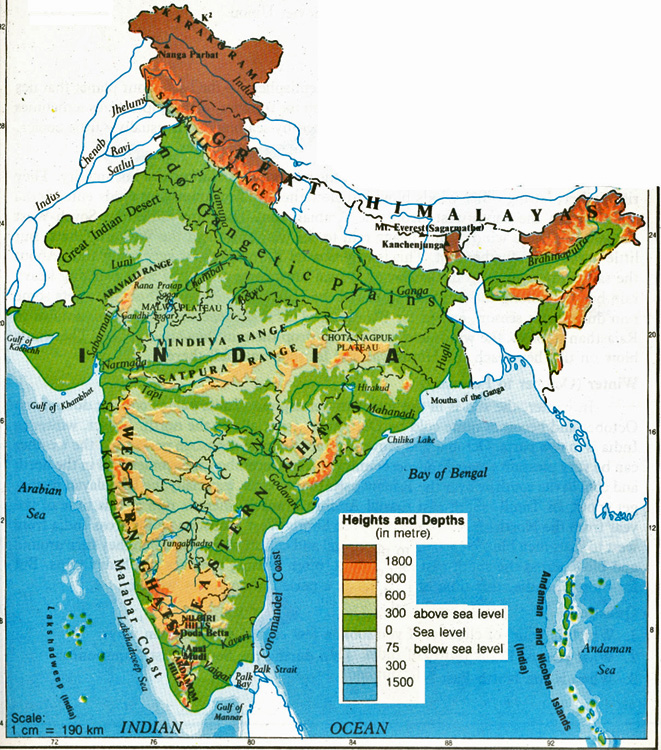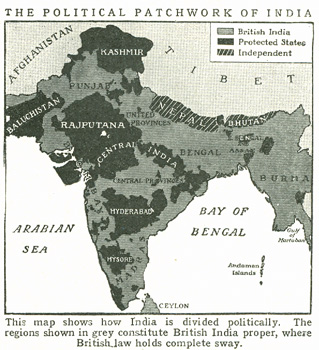 |
Extent— North to South, 1,900 miles; east to west, 2,000 miles. Area, about 1,800,000 square miles. Population about 350.000,000. |

The following texts are from an out-of-print and out-of-copyright encyclopedia originally designed for children. It was issued in a variety of forms with different contents in the USA and UK, and different editions in the three decades after it was first launched. The following excerpts in this variant come from 'The Book of Knowledge - An encyclopedia for readers of all Ages' ed. by harold F.B. Wheeler and published by The Waverly Book Company, Ltd. Farringdon St. EC4 London - either 1931 or 1932 (not later, though none of the volumes have date of publication or printing in them). The text of the article (without photos) is found here)
The interest in the coverage of India and related themes here lies in the general view of the British Colony in a British publication. At that time the Indian Independence movement was growing and Mahatma Gandhi - who had only recently landed in Bombay to begin his politics there - was nonetheless not prominent enough yet to have an entry in this fairly limited encyclopedia. A perspective from that largely-forgotten time is thus trapped or frozen in this entry, giving a view which would be difficult to reconstruct in such a popular fashion without such sources as these.
The map below, posted a a guide to the pages listed is of a much more recent date - as printed in an Indian schoolbook:-
 |
Extent— North to South, 1,900 miles; east to west, 2,000 miles. Area, about 1,800,000 square miles. Population about 350.000,000. |
